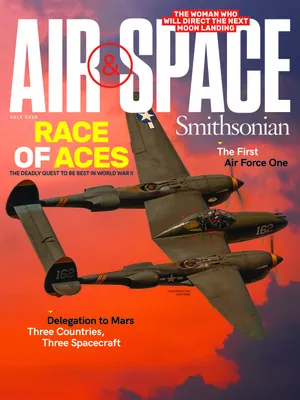In the 1940s, Drones Were Just Something for Navy Gunners to Shoot At
Say hello to the Katydid, one of the first UAVs.
:focal(1175x812:1176x813)/https://tf-cmsv2-smithsonianmag-media.s3.amazonaws.com/filer/d9/36/d9362bd2-8d4c-4ac6-b816-b841e9515ae2/27a_jj2020_katydid_a19660162000cp14_live.jpg)
Radio-controlled, gyro-stabilized, and powered by an externally mounted, gasoline-powered pulsejet engine, which used a design similar to the German V-1 rocket to deliver 55 pounds of thrust, the “Katydid” was one of the most sophisticated UAVs of the mid- to late 1940s. Recognizable by its distinct V-tail, the 320-pound drone could be launched via an AT-1 catapult or released from the bomb rack of a PBY-4 Catalina, at which point gunners would attempt to draw a bead on it.
Hitting the target wasn’t easy and wasn’t meant to be. With a wingspan of 12.5 feet, the Katydid could fly for up to 40 minutes at a top speed of 175 miles per hour. Whenever possible, salvage crews recovered the felled drone so it could be shot down again.
McDonnell Aircraft gave the Katydid, intially christened XTD2D-1, various designations throughout its development. Though its first flight was in 1942, the Katydid was deployed too late to act as a stand-in for Messerschmitts or Zeros. Production models did not become available until 1946.
McDonnell retained Katydid’s V-wing for its Kingfisher line of jet-powered anti-ship missiles developed during the 1950s.
